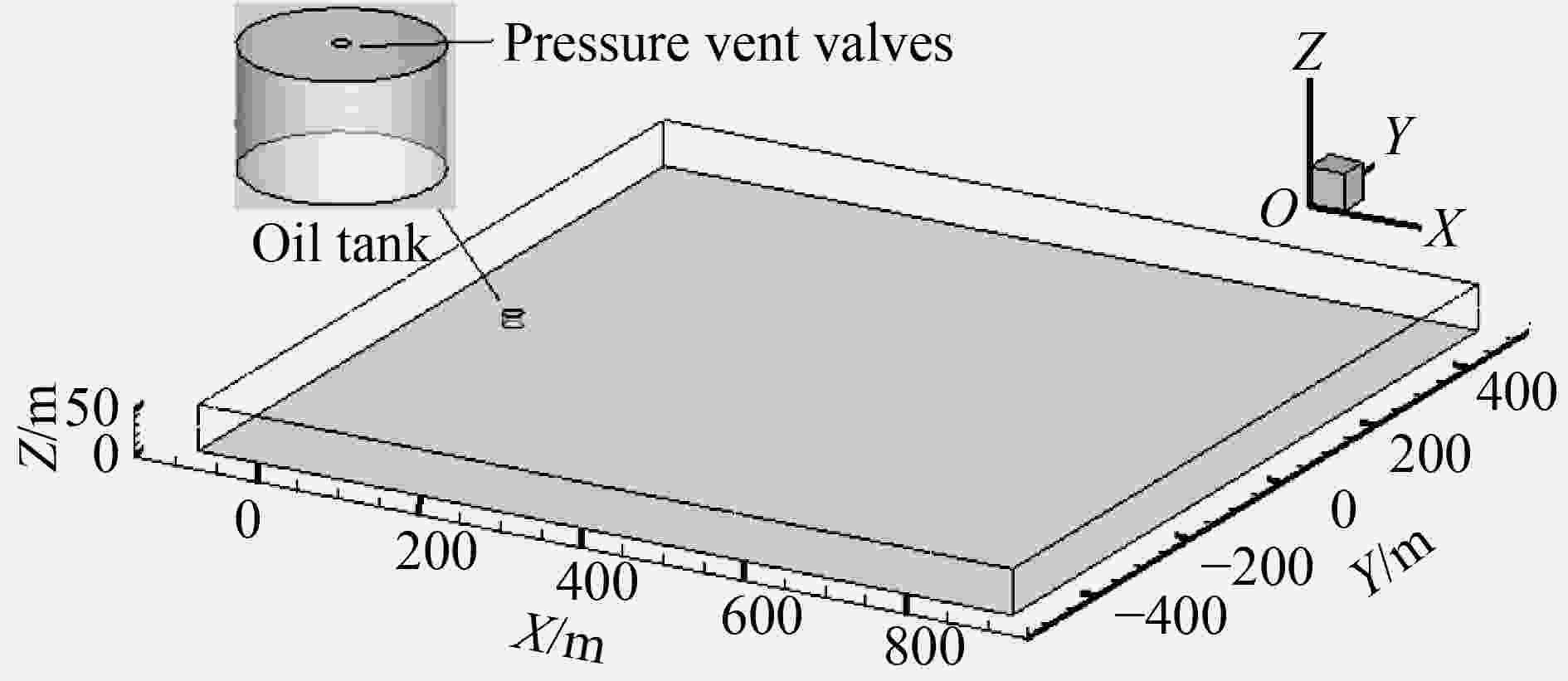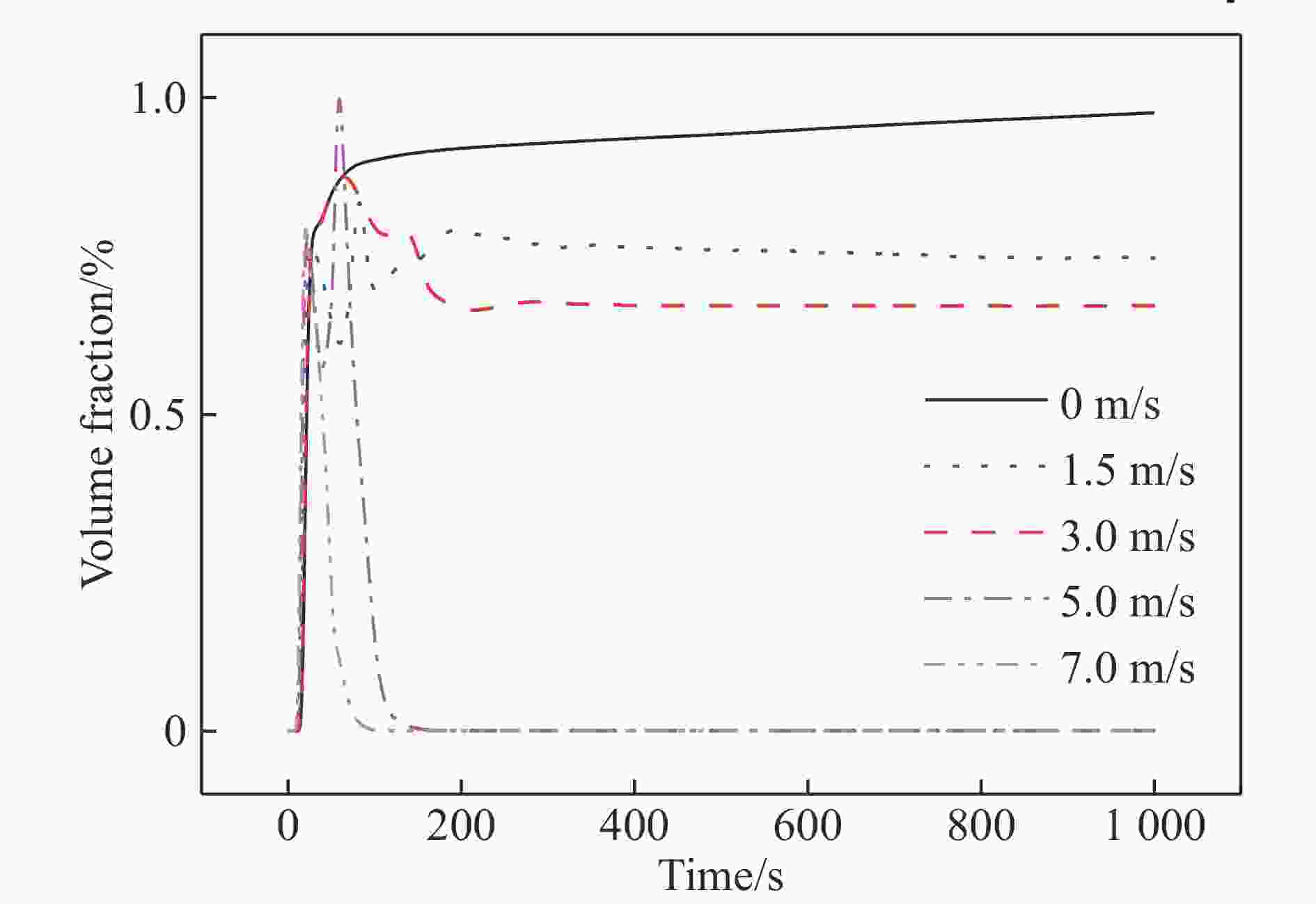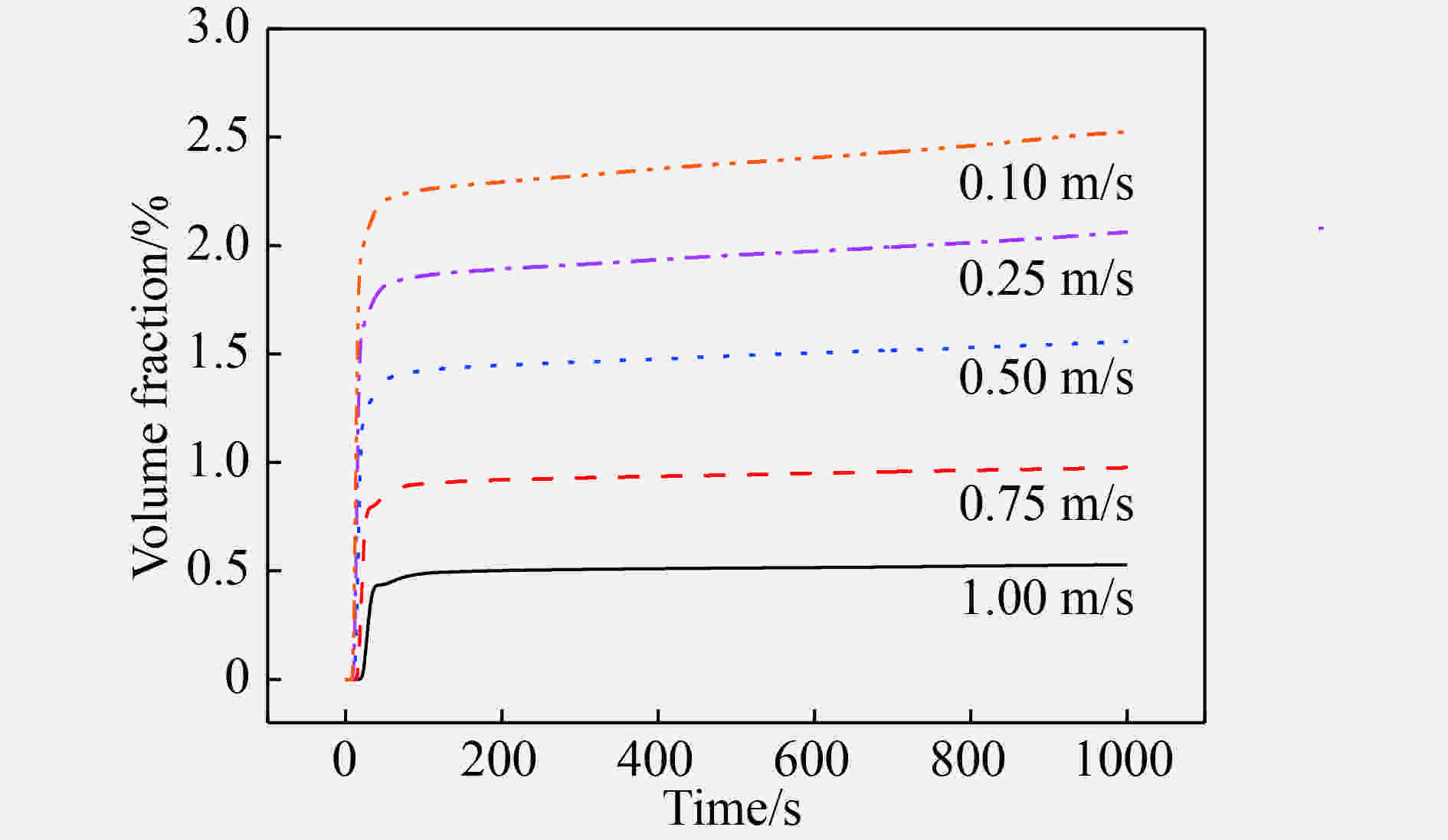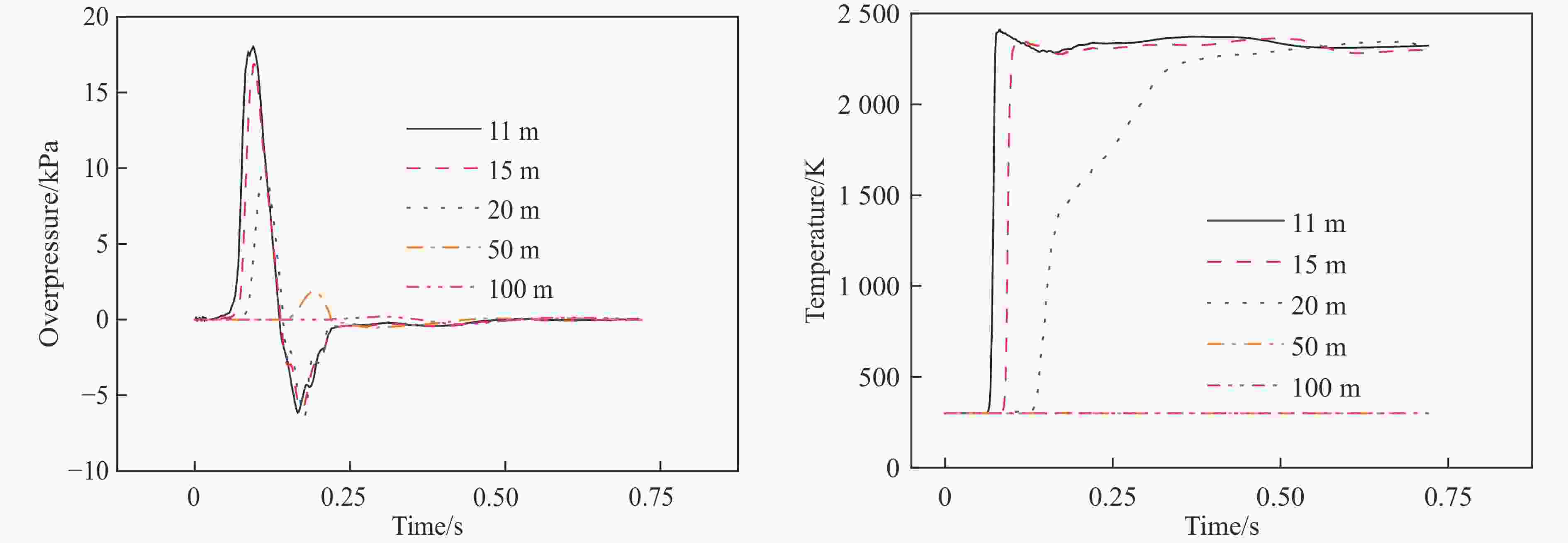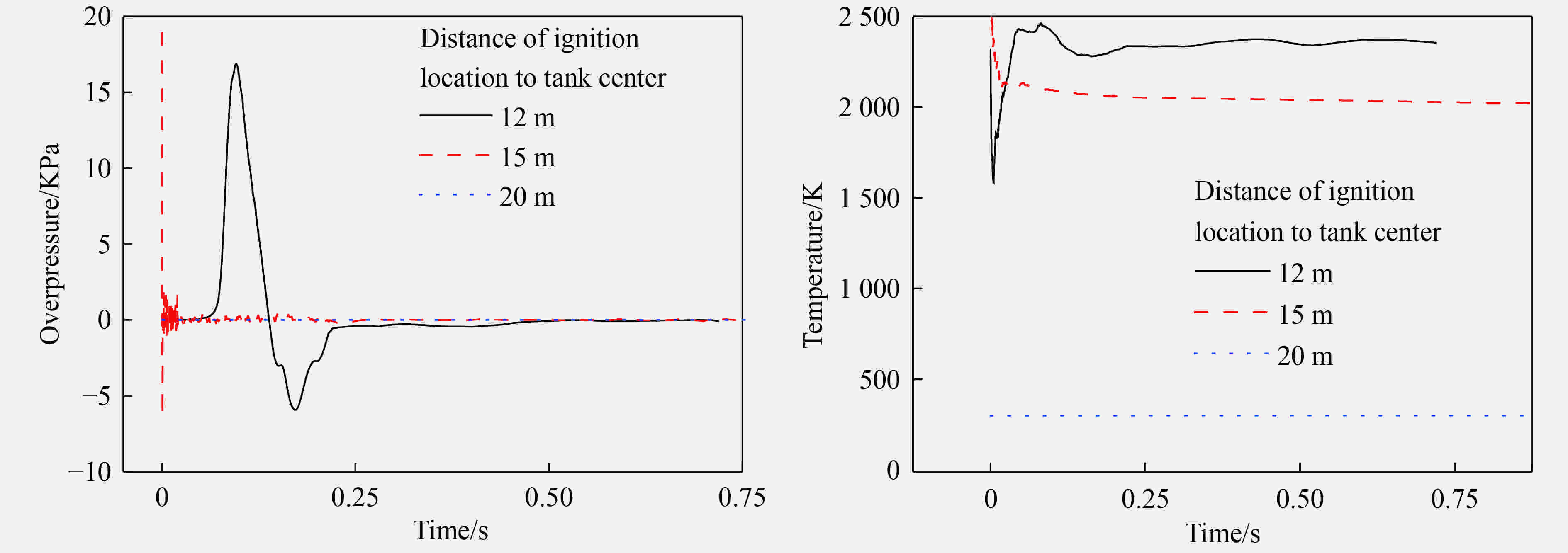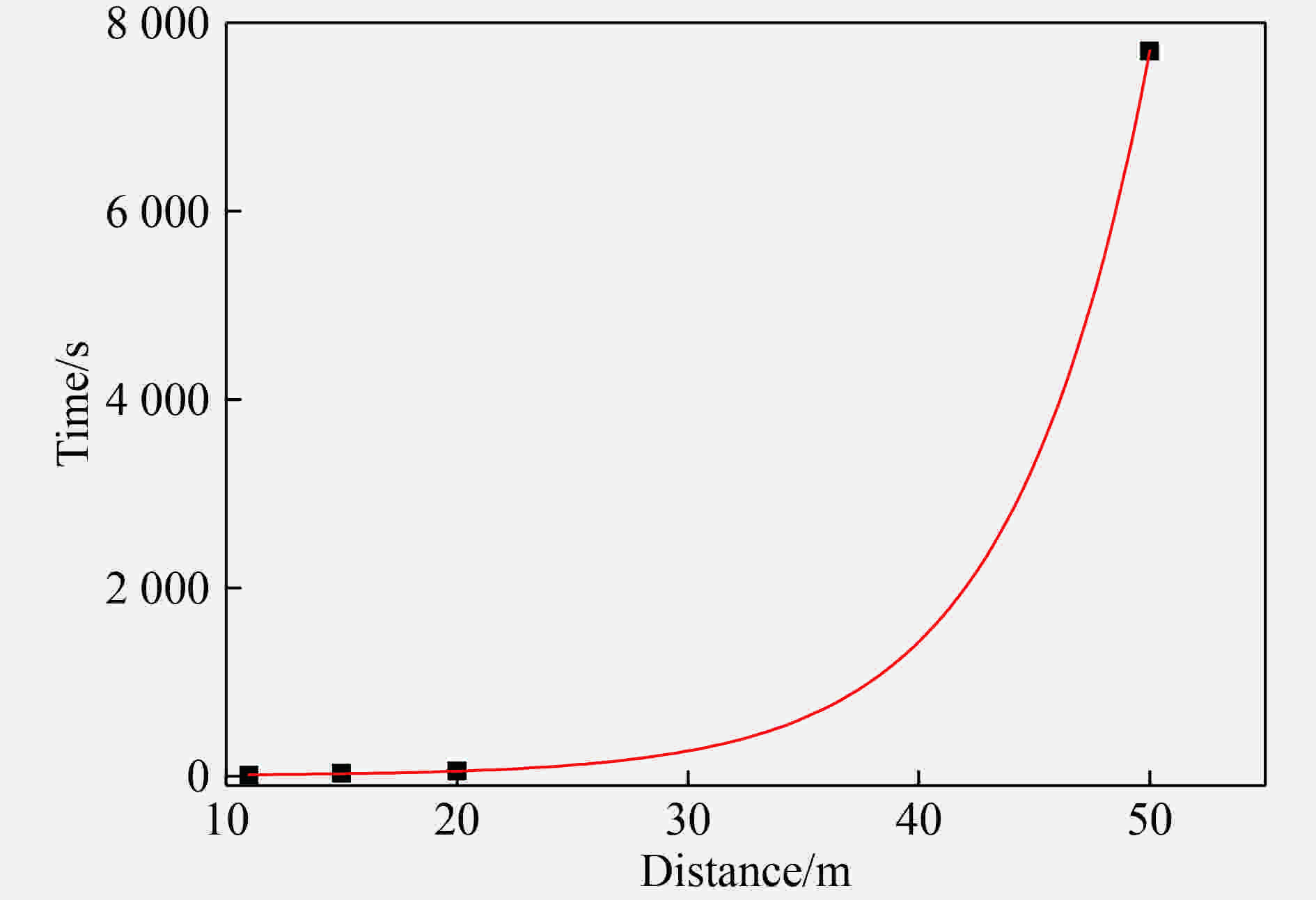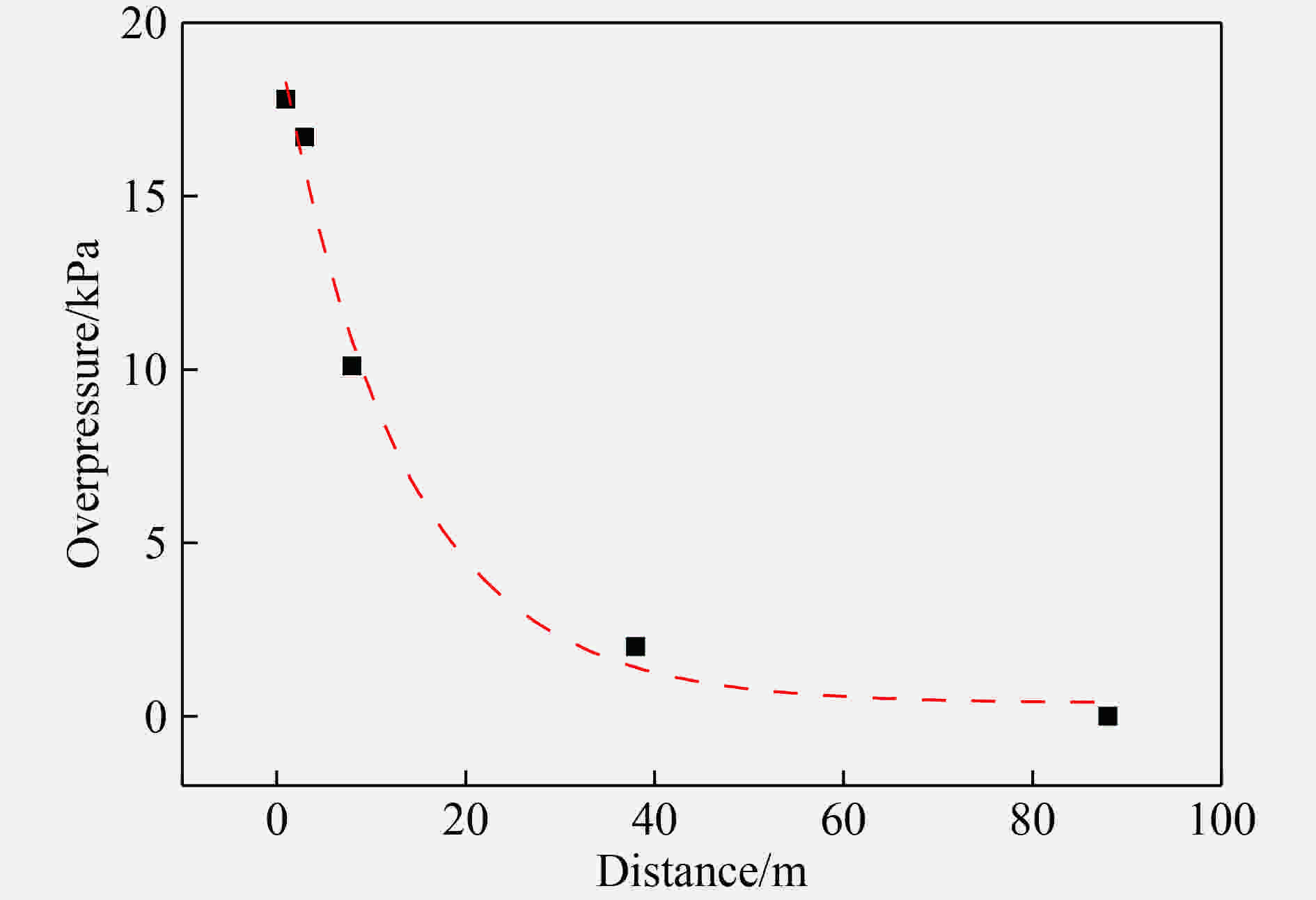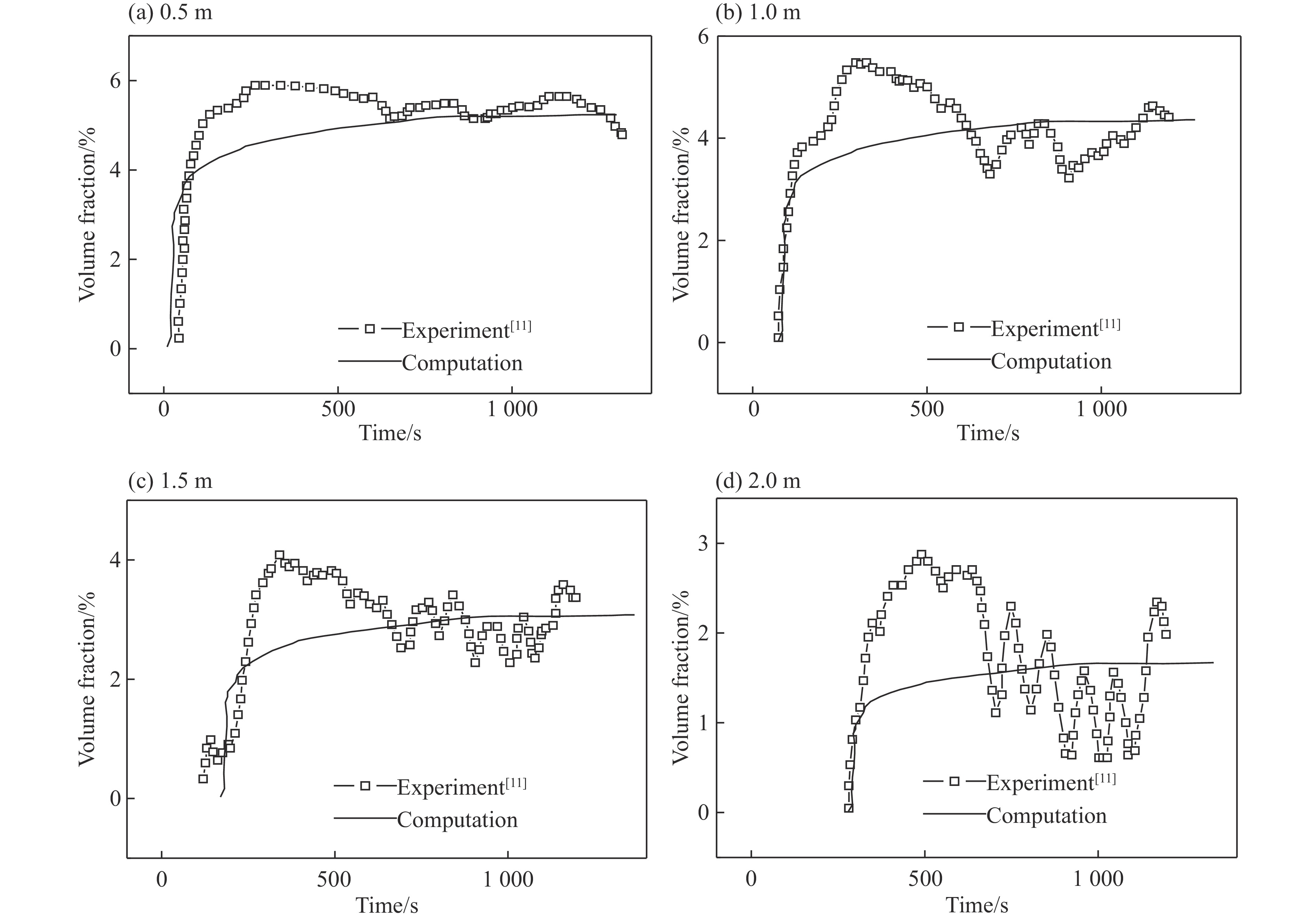Gasoline vapor leakage and explosion law of an oil tank adjacent to fire
-
摘要: 油库发生火灾时,临近的油罐内汽油受热形成油蒸汽从呼吸阀泄出,泄漏的油蒸汽与空气混合易点燃,易引起燃烧爆炸事故。本文中以容积为5 000 m3(
$ \varnothing$ 22 m×13 m)的汽油罐泄漏油蒸汽为研究对象,以数值模拟为研究方法,研究了汽油蒸汽泄漏及爆炸规律。研究发现:在距地面高1 m的平面上,当无风且呼吸阀泄漏油蒸汽速率为0.25 m/s时,距该罐中心50 m以外就可视作安全区域;当呼吸阀泄漏的油蒸汽速率为0.25 m/s时,风速达到5.0 m/s及以上,不易积聚成爆炸油蒸汽;当无风时,呼吸阀泄漏油蒸汽的速率增大1个量级,油蒸汽积聚达到爆炸下限1/2所需时间缩短2个量级;当风速为3.0 m/s、呼吸阀泄漏油蒸汽速率为0.25 m/s、泄漏时间为200 s、着火点距罐壁1 m时,距点火源距离增大1个量级,超压峰值下降1~2个量级。Abstract: When the oil depot is in fire, a large amount of gasoline vapor is formed by the heat absorption of oil in an adjacent gasoline tank with a fixed top. The gasoline vapor is ignited after mixing with air, which is likely to cause combustion and explosion accidents. In this paper, the gasoline vapor leaked from a tank of 5 000 m3 ($ \varnothing$ 22 m×13 m) is taken as the research object, the law of gas vapor leakage and explosion is researched by numerical simulation. It is found that the area beyond 50 m away from the tank center is safe at 1 m above the ground if there is no wind and the gasoline vapor leakage velocity is 0.25 m/s. It is not easy to accumulate into the flammable gasoline vapor as the gasoline vapor leakage velocity from the breathing valve is 0.25 m/s, and the wind speed reaches 5.0 m/s and above. As there is no wind and the gasoline vapor leakage velocity from the breathing valve is increased by 1 order of magnitude, the time to half of the lower flammability limit is reduced by 2 orders of magnitude. When the wind speed is 3.0 m/s, the gasoline vapor leaking velocity is 0.25 m/s, and the leakage time is 200 s, the peak overpressure is reduced by 1−2 orders of magnitude if the distance to the ignition source is increased by 1 order of magnitude.-
Key words:
- gasoline vapor /
- leakage /
- explosion /
- fire /
- oil depot
-
表 1 不同超压作用条件下的人员伤害和建筑破坏作用
Table 1. Personnel injury and building destruction under different overpressure conditions
Δp/kPa 伤害情况 破坏作用 5~6 无伤害 门、窗玻璃部分破碎 6~15 无伤害 压面的门窗玻璃大部分破碎 15~19.6 无伤害 窗框损坏 19.6~29.4 人体受到轻微损伤 墙裂缝 -
[1] ZHANG Peili, LI Jianxiang, GUO Yanbo, et al. The secondary explosion phenomenon of gasoline-air mixture in a confined tunnel [J]. IOP Conference Series: Earth and Environmental Science, 2017, 64(1): 012008. DOI: 10.1088/1755-1315/64/1/012008. [2] QI Sheng, DU Yang, WANG Shemao, et al. The effect of vent size and concentration in vented gasoline-air explosions [J]. Journal of Loss Prevention in the Process Industries, 2016, 44: 88–94. DOI: 10.1016/j.jlp.2016.08.005. [3] DU Yang, ZHANG Peili, OU Yihong. Effects of humidity, temperature and slow oxidation reactions on the occurrence of gasoline-air explosions [J]. Journal of Fire Protection Engineering, 2013, 23(3): 226–238. doi: 10.1177/1042391513486464 [4] 任少云. 爆炸下限临界浓度丙烷-空气混合过程及可燃性研究 [J]. 高压物理学报, 2017, 31(5): 629–636. DOI: 10.11858/gywlxb.2017.05.017.REN Shaoyun. The mixing and explosion process of propane-air at lower flammable limit in confined vessel [J]. Chinese Journal of High Pressure Physics, 2017, 31(5): 629–636. DOI: 10.11858/gywlxb.2017.05.017. [5] LI Guoqing, DU Yang, WANG Shimao, et al. Large eddy simulation and experimental study on vented gasoline-air mixture explosions in a semi-confined obstructed pipe [J]. Journal of Hazardous Materials, 2017, 339: 131–142. DOI: 10.1016/j.jhazmat.2017.06.018. [6] DU Yang, ZHANG Peili, ZHOU Yi, et al. Suppressions of gasoline-air mixture explosion by non-premixed nitrogen in a closed tunnel [J]. Journal of Loss Prevention in the Process Industries, 2014, 31: 113–120. DOI: 10.1016/j.jlp.2014.07.012. [7] 任海亮. 火灾情况下固定顶油罐物理性爆炸研究 [D]. 廊坊: 中国人民武装警察部队学院, 2014: 26−36.REN Hailiang. Research on physical explosion of fixed-roof tanks under fire condition [D]. Langfang: The Chinese People’s Armed Police Force Academy, 2014: 26−36. [8] 李建华. 灭火战术 [M]. 北京:群众出版社, 2004: 323−325. [9] Fluent Inc. Fluent 6.3 user’s guide [M/CD]. Fluent Inc., 2006: 1628−1641. [10] 王福军. 计算流体动力学分析CFD软件原理与应用 [M]. 北京: 清华大学出版社, 2004: 7−13. [11] 张玉洁. 油气及有毒性气体泄漏扩散危险性研究 [D]. 西安: 长安大学, 2015: 24−26.ZHANG Yujie. Study on the leakage and diffusion dangers of oil gas and toxic gases [D]. Xi’an: Chang’an University, 2015: 24−26. [12] 王晓程. 常低压储罐呼吸阀呼吸量计算与设置 [J]. 天津化工, 2016, 30(6): 56–58. doi: 10.3969/j.issn.1008-1267.2016.06.022WANG Xiaocheng. Breather valve calculation and setup for atmospheric and low-pressure storage tanks [J]. Tianjin Chemical Industry, 2016, 30(6): 56–58. doi: 10.3969/j.issn.1008-1267.2016.06.022 [13] 傅智敏, 黄金印, 臧娜. 爆炸冲击波伤害破坏作用定量分析 [J]. 消防科学与技术, 2009, 28(6): 390–395. doi: 10.3969/j.issn.1009-0029.2009.06.002FU Zhimin, HUANG Jinyin, ZANG Na. Quantitative analysis for consequence of explosion shock wave [J]. Fire Science and Technology, 2009, 28(6): 390–395. doi: 10.3969/j.issn.1009-0029.2009.06.002 -









 下载:
下载:
